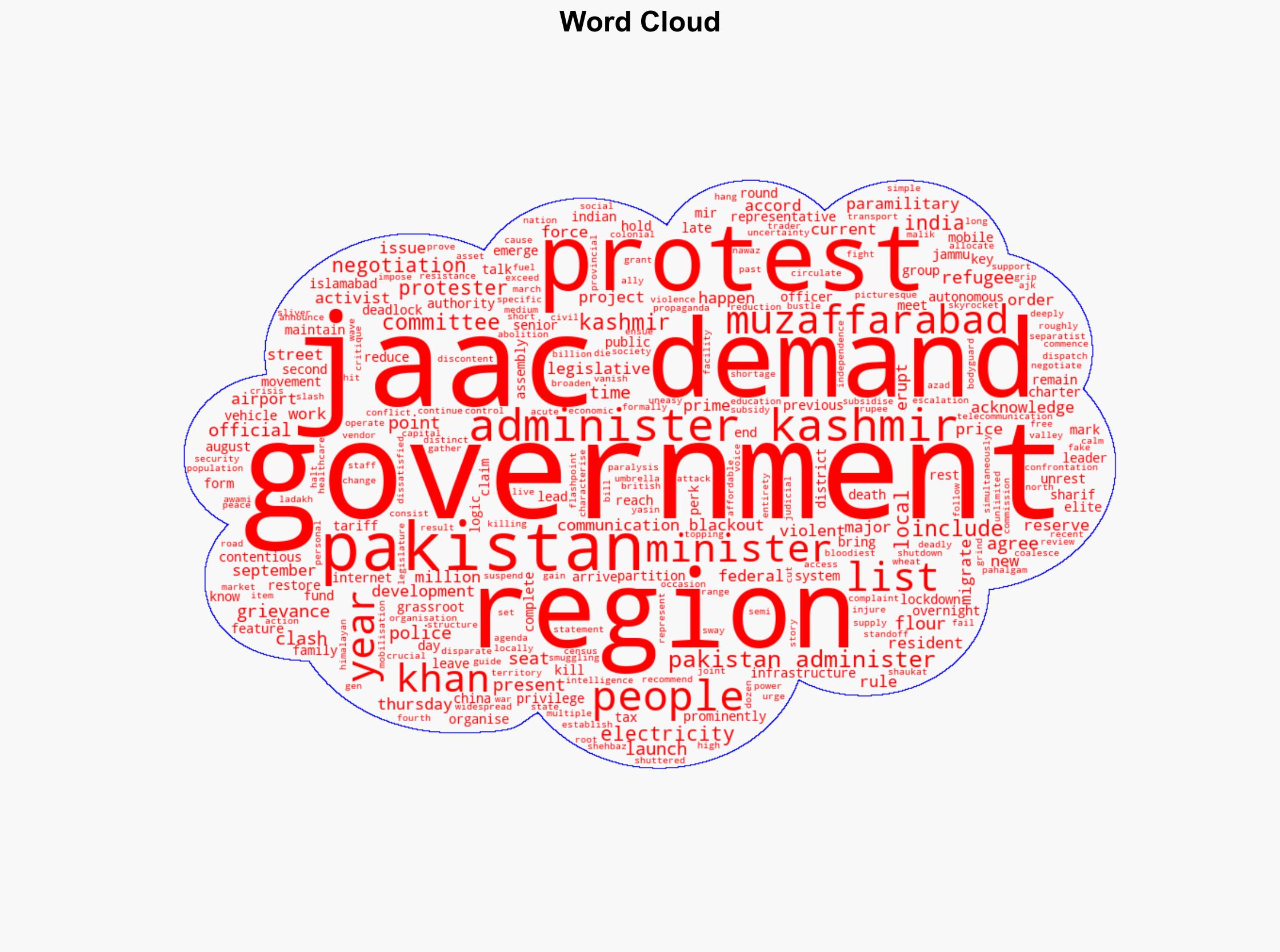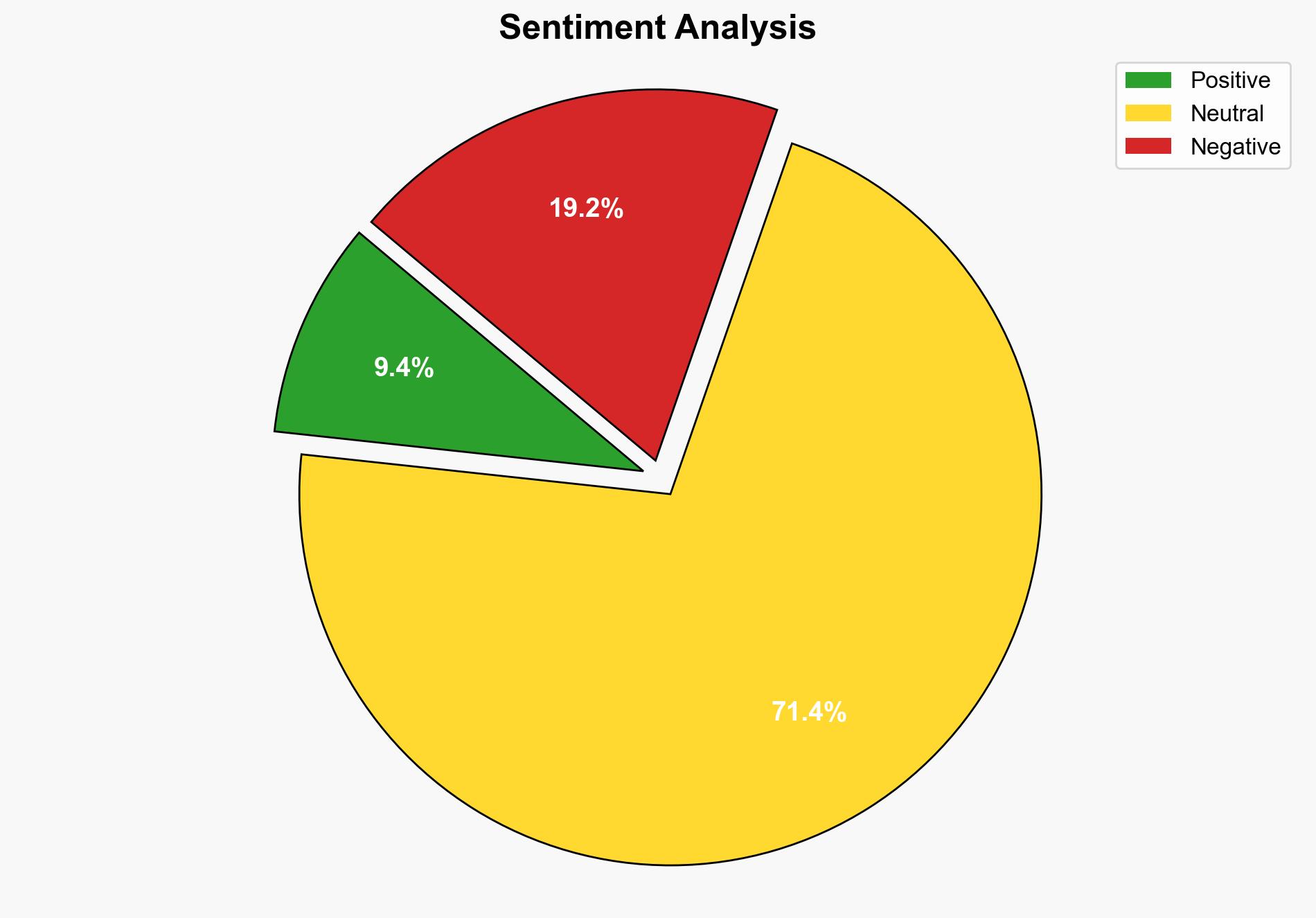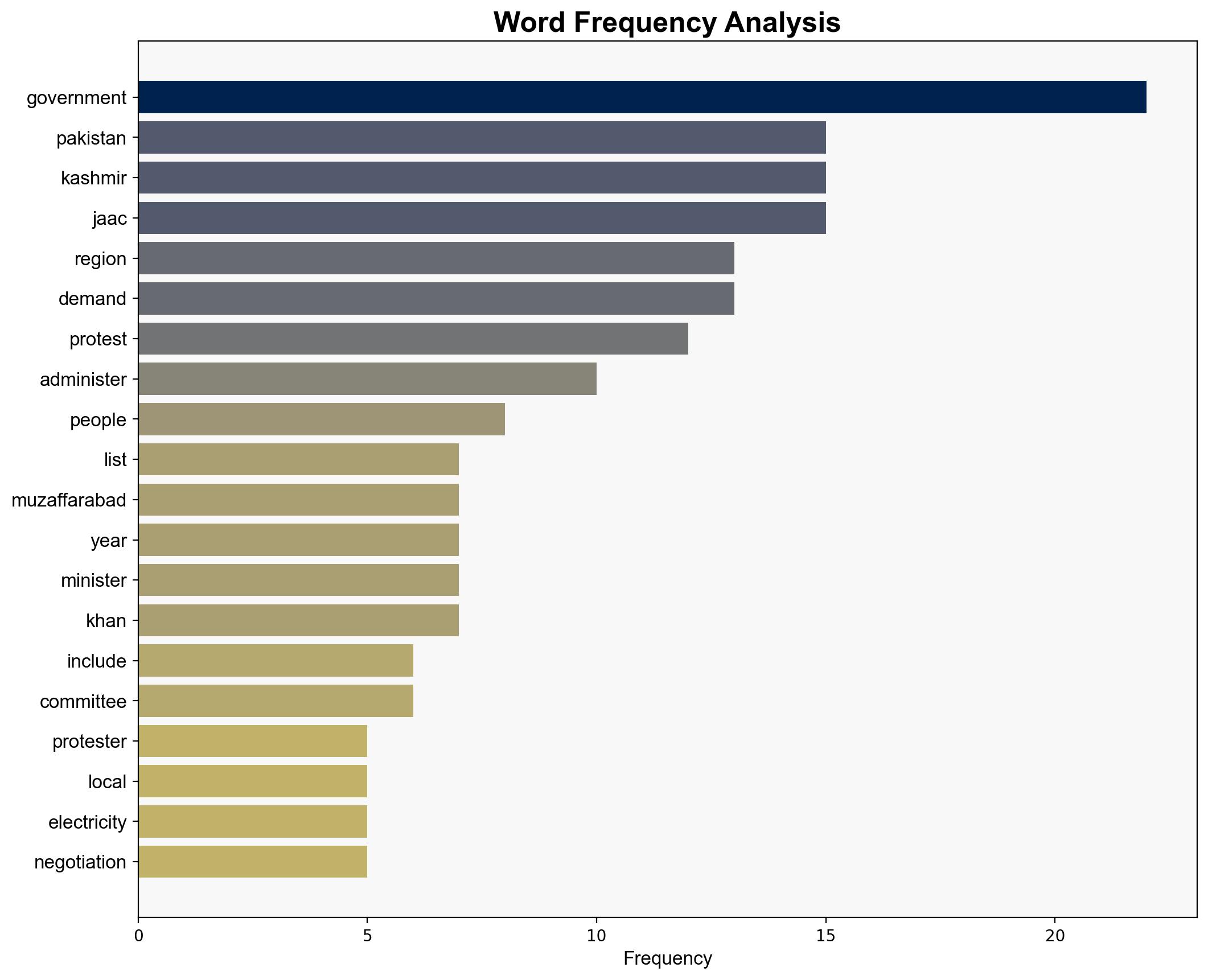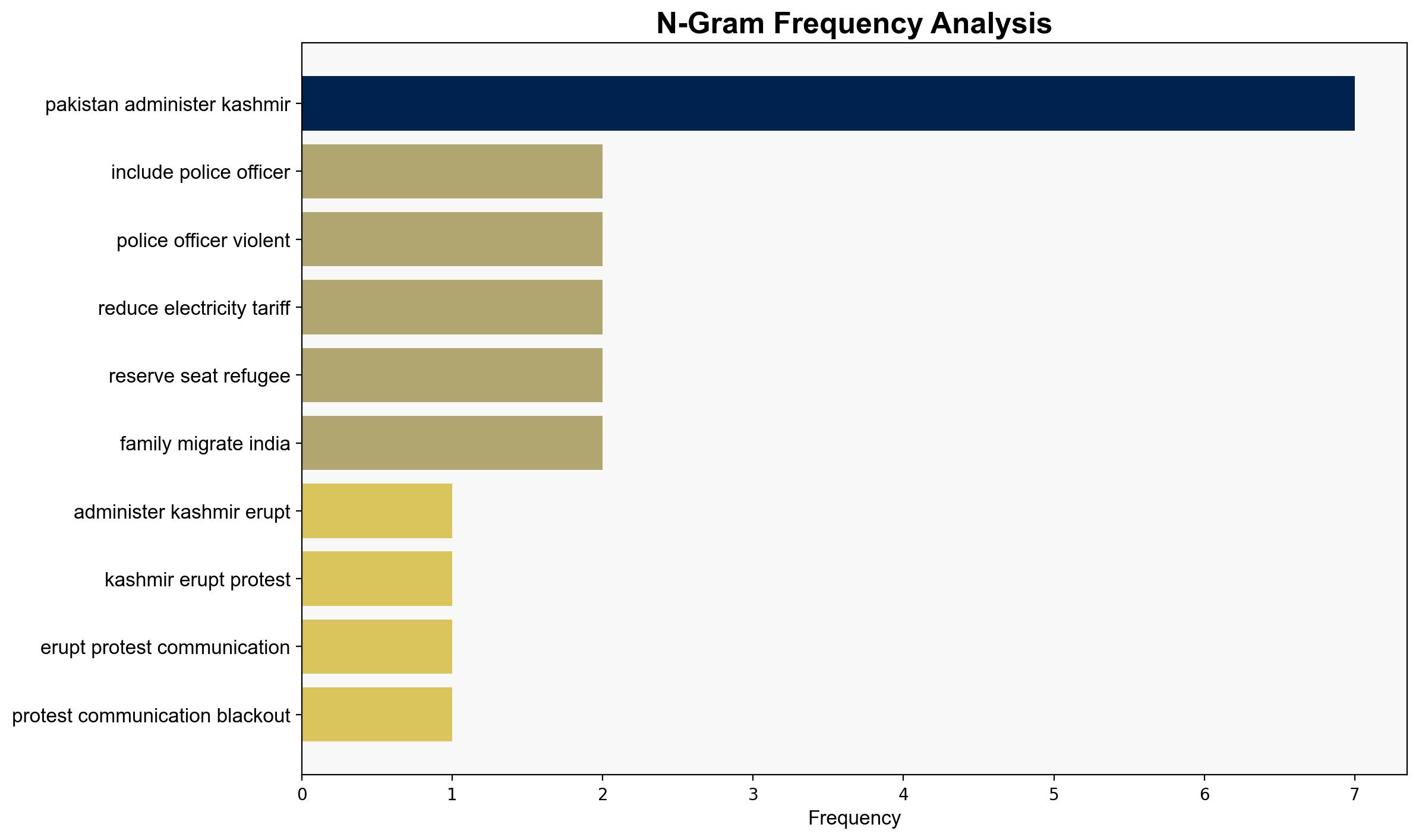Why has Pakistan-administered Kashmir erupted in protest again – Al Jazeera English
Published on: 2025-10-03
Intelligence Report: Why has Pakistan-administered Kashmir erupted in protest again – Al Jazeera English
1. BLUF (Bottom Line Up Front)
The most supported hypothesis is that the protests in Pakistan-administered Kashmir are primarily driven by local grievances related to economic hardships and governance failures. Confidence level: Moderate. Recommended action: Engage in diplomatic dialogue with regional stakeholders to address economic concerns and prevent further escalation.
2. Competing Hypotheses
Hypothesis 1: The protests are primarily driven by local economic grievances, including skyrocketing electricity bills and flour shortages, exacerbated by governance failures.
Hypothesis 2: The protests are a manifestation of broader geopolitical tensions, with external actors potentially exploiting local discontent to destabilize the region.
Using the Analysis of Competing Hypotheses (ACH) 2.0, Hypothesis 1 is better supported due to the specific economic grievances cited and the historical context of local protests over similar issues. Hypothesis 2 lacks direct evidence of external manipulation, though it cannot be entirely dismissed.
3. Key Assumptions and Red Flags
Assumptions for Hypothesis 1 include the belief that economic grievances are the primary motivator for protests. A red flag is the potential underestimation of external influences. For Hypothesis 2, the assumption is that external actors have the capability and intent to exploit local unrest, which lacks concrete evidence. A blind spot is the limited visibility into covert operations by regional powers.
4. Implications and Strategic Risks
The continuation of protests could destabilize the region, leading to economic paralysis and humanitarian issues. There is a risk of escalation if local grievances are not addressed, potentially inviting external intervention. Cyber and information warfare could be employed to further inflame tensions, complicating resolution efforts.
5. Recommendations and Outlook
- Engage in diplomatic efforts to facilitate dialogue between the government and local leaders to address economic grievances.
- Monitor for signs of external interference and prepare countermeasures to mitigate potential destabilization efforts.
- Scenario Projections:
- Best Case: Successful negotiations lead to economic reforms and stabilization.
- Worst Case: Escalation into broader conflict with regional powers involved.
- Most Likely: Continued protests with intermittent government concessions.
6. Key Individuals and Entities
Shaukat Nawaz Mir, Yasin Malik, Shehbaz Sharif
7. Thematic Tags
national security threats, cybersecurity, counter-terrorism, regional focus




